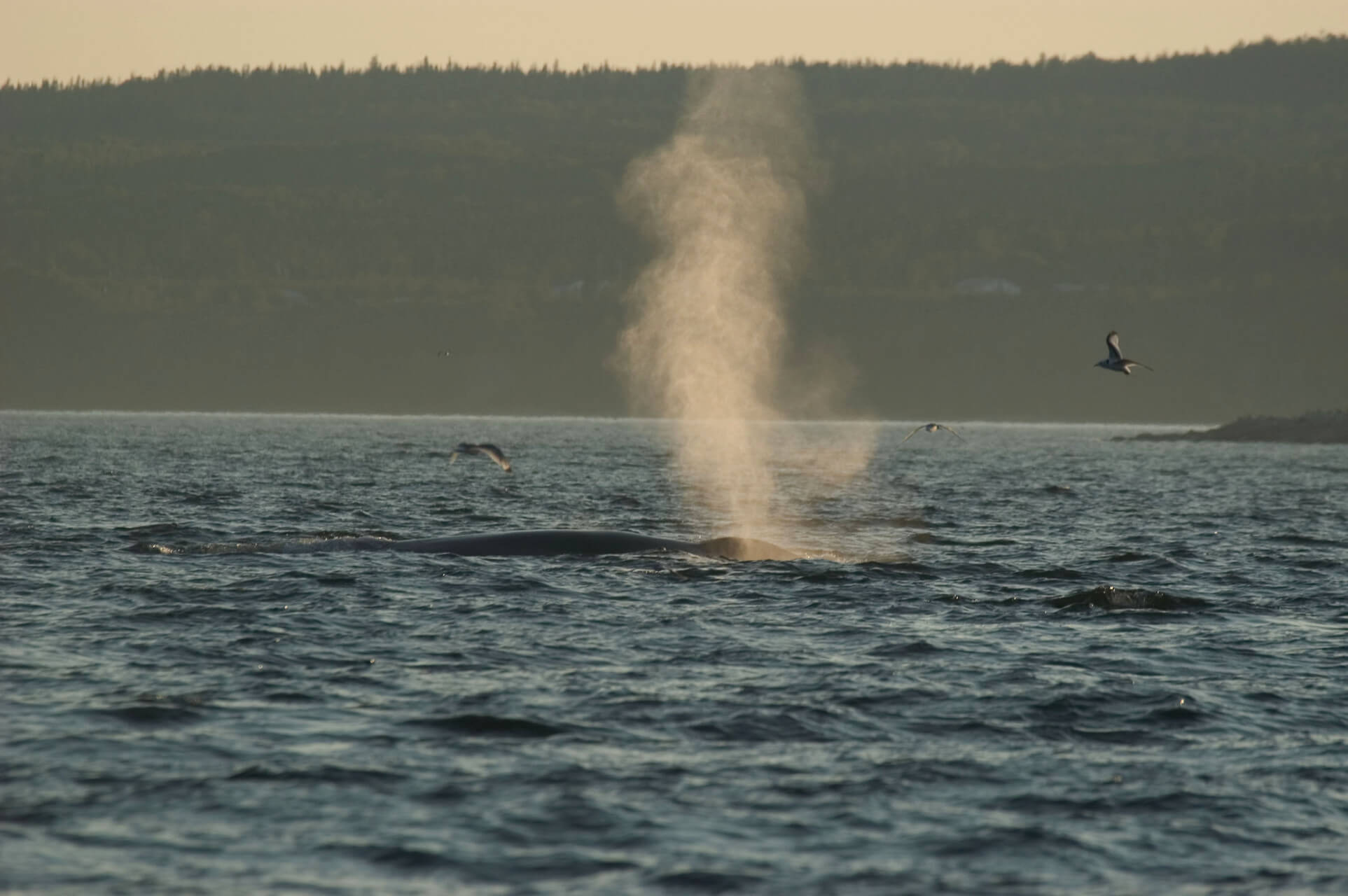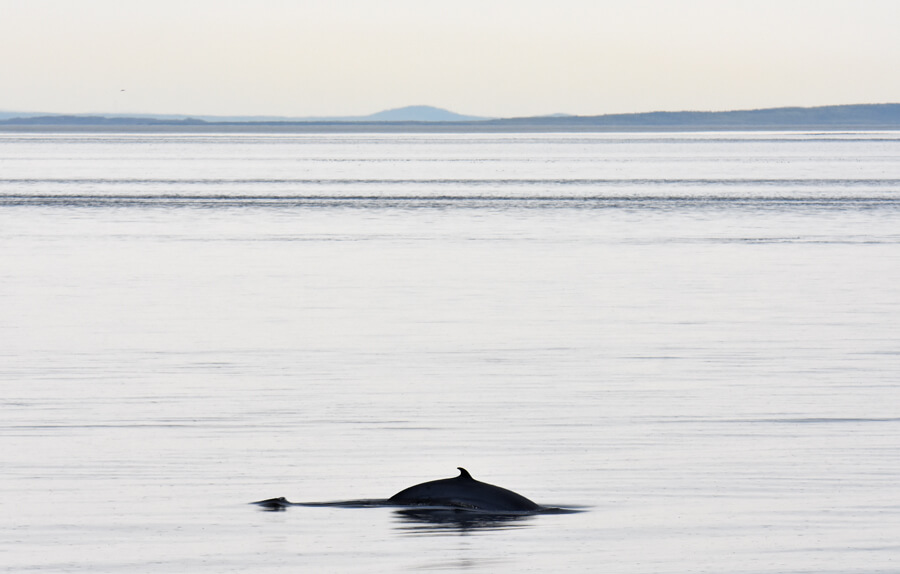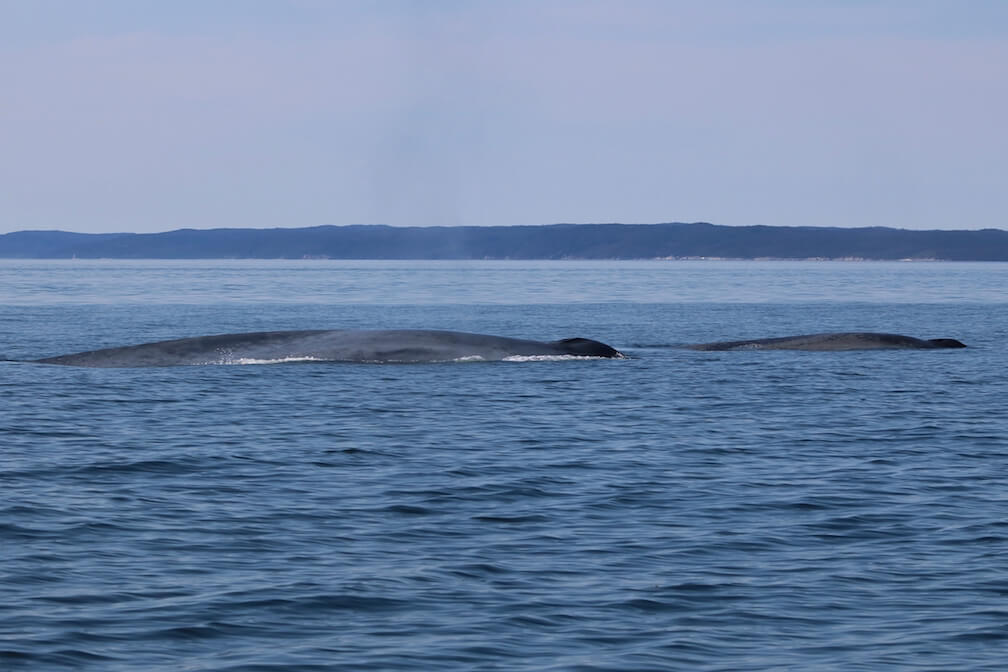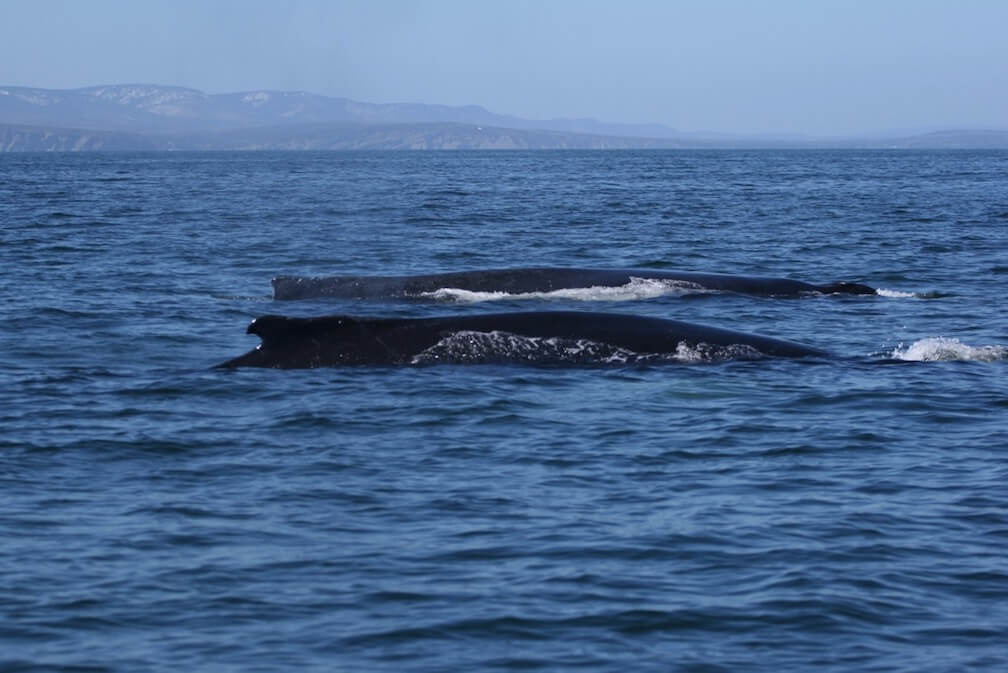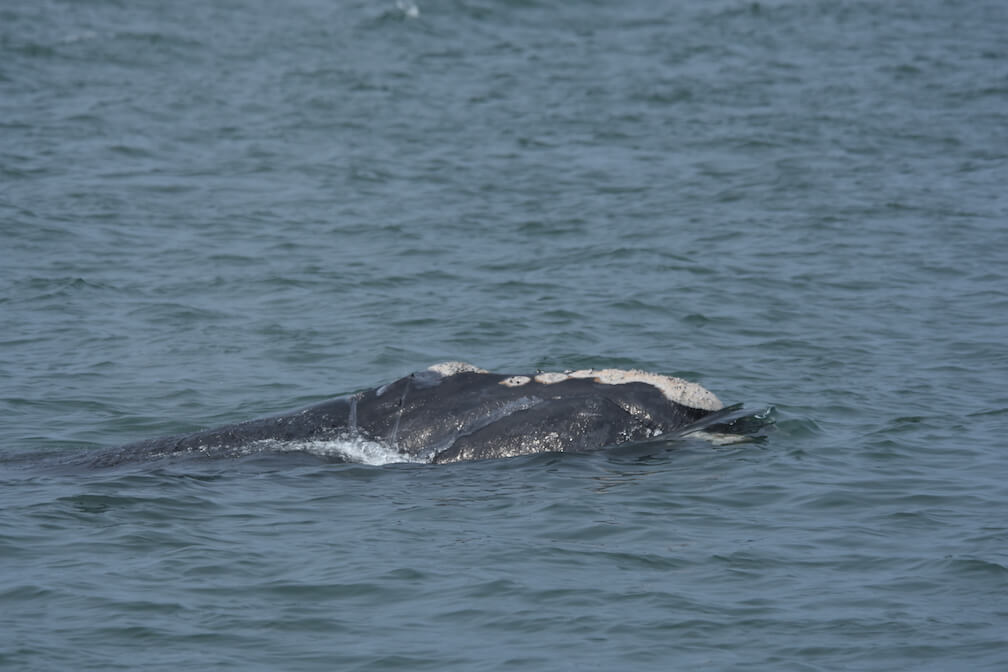First, you must spot them!
Scanning the water with the naked eye is the best option for covering large swaths of sea. This way, you can use your binoculars to take a closer look if you see anything unusual. Most often, a plume of mist above the water surface from the animal’s exhalation is the first sign that a large whale is present. This plume is called a spout. In clear weather, such plumes can be visible up to several kilometres away! Once you’ve spotted a spout, keep looking in the same direction since you might see the back of this huge animal. As mentioned earlier, every species is different, as is its behaviour. Depending on the type of whale you’ve spotted and what it is doing, you will be able to observe a few more spouts before the animal takes a long, deep dive.
Tip: Stay alert! Every whale must resurface to breathe again and, after a deep dive, the animal can resurface at any place and at any moment. Cetaceans are capable of travelling great distances during their dives.

